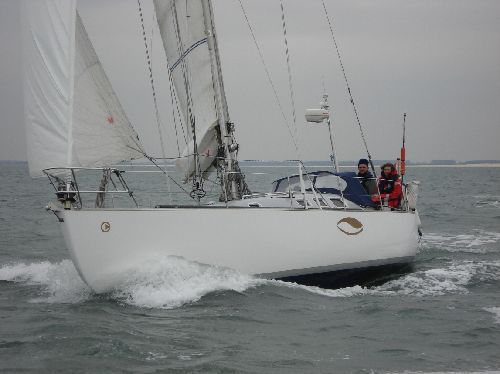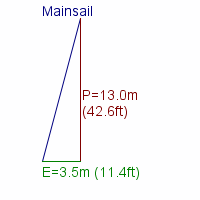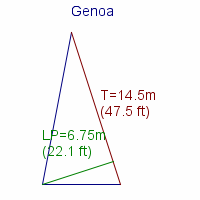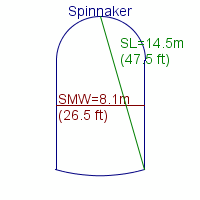Review of Kaskelot


Basic specs.

Looking for a new boat? Find a Kaskelot or similar boat for sale
The hull is a double hull which improves the indoor climate. Especially when the water is colder than the air in the cabin, then the double hull insulates against cold water and reduce the condense water in the cabin.
The deck is a double deck which improves the indoor climate.
The boat is equipped with one cabin, 5 berths, a galley and toilet facility.
Note: the boat has also been sold to be self-made/-interiored, which means that the quality of each boat may vary.
Kaskelot is typically equipped with an inboard Bukh DV20 diesel engine at 22.0 hp (16 kW), which gives a max speed about 4.9 knots.
The transmission is a shaft drive. A shaft drive will in the long run require less maintenence than other types of drive e.g. a sail drive.
The fuel tank which is made of steel has a capacity of 55 liters (14 US gallons, 12 imperial gallons).
Sailing characteristics
This section covers widely used rules of thumb to describe the sailing characteristics. Please note that even though the calculations are correct, the interpretation of the results might not be valid for extreme boats.
What is Capsize Screening Formula (CSF)?
The capsize screening value for Kaskelot is 1.73, indicating that this boat could - if evaluated by this formula alone - be accepted to participate in ocean races.
What is Theoretical Maximum Hull Speed?
The theoretical maximal speed of a displacement boat of this length is 7.4 knots. The term "Theoretical Maximum Hull Speed" is widely used even though a boat can sail faster. The term shall be interpreted as above the theoretical speed a great additional power is necessary for a small gain in speed.
The immersion rate is defined as the weight required to sink the boat a certain level.
The immersion rate for Kaskelot is about 205 kg/cm, alternatively 1151 lbs/inch.
Meaning: if you load 205 kg cargo on the boat then it will sink 1 cm.
Alternatively, if you load 1151 lbs cargo on the boat it will sink 1 inch.
Sailing statistics
This section is statistical comparison with similar boats of the same category. The basis of the following statistical computations is our unique database with more than 26,000 different boat types and 350,000 data points.
What is Motion Comfort Ratio (MCR)?
The Motion Comfort Ratio for Kaskelot is 32.2.
What is L/B (Length Beam Ratio)?
The l/b ratio for Kaskelot is 3.12.
What is Displacement Length Ratio?
The DL-ratio for Kaskelot is 247 which categorizes this boat among 'light crusers & offshore racers'.
What is SA/D (Sail Area Displacement ratio)?
The SA/D for Kaskelot with ISO 8666 reference sail is 14.7, with a 135% genua the SA/D is 17.7.
What is Relative Speed Performance?
The Relative Speed Performance for Kaskelot is 66
Maintenance
Dimensions of sail for masthead rig.



Are your sails worn out? You might find your next sail here: Sails for Sale
If you need to renew parts of your running rig and is not quite sure of the dimensions, you may find the estimates computed below useful.
| Usage | Length | Diameter | ||
| Mainsail halyard | 33.8 m | (110.9 feet) | 10 mm | (3/8 inch) |
| Jib/genoa halyard | 33.8 m | (110.9 feet) | 10 mm | (3/8 inch) |
| Spinnaker halyard | 33.8 m | (110.9 feet) | 10 mm | (3/8 inch) |
| Jib sheet | 10.3 m | (33.8 feet) | 12 mm | (1/2 inch) |
| Genoa sheet | 10.3 m | (33.8 feet) | 12 mm | (1/2 inch) |
| Mainsheet | 25.8 m | (84.5 feet) | 12 mm | (1/2 inch) |
| Spinnaker sheet | 22.7 m | (74.3 feet) | 12 mm | (1/2 inch) |
| Cunningham | 3.5 m | (11.5 feet) | 10 mm | (3/8 inch) |
| Kickingstrap | 7.0 m | (23.0 feet) | 10 mm | (3/8 inch) |
| Clew-outhaul | 7.0 m | (23.0 feet) | 10 mm | (3/8 inch) |
This section is reserved boat owner's changes, improvements, etc. Here you might find (or contribute with) inspiration for your boat.
Do you have changes/improvements you would like to share? Upload a photo and describe what you have done.
We are always looking for new photos. If you can contribute with photos for Kaskelot it would be a great help.
If you have any comments to the review, improvement suggestions, or the like, feel free to contact us. Criticism helps us to improve.
